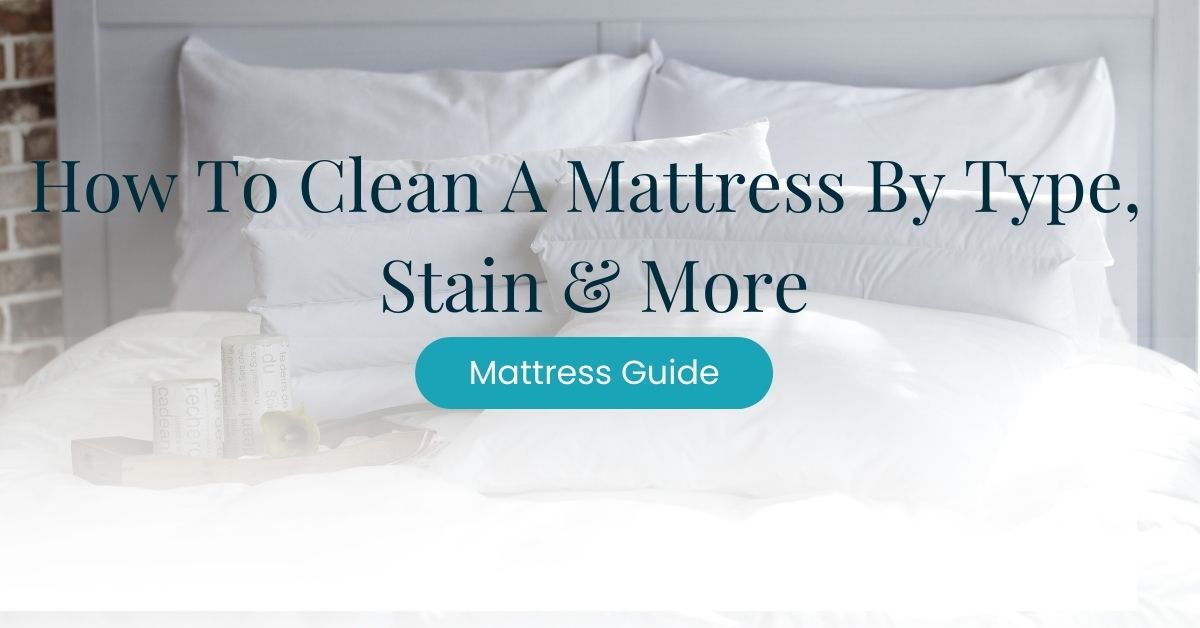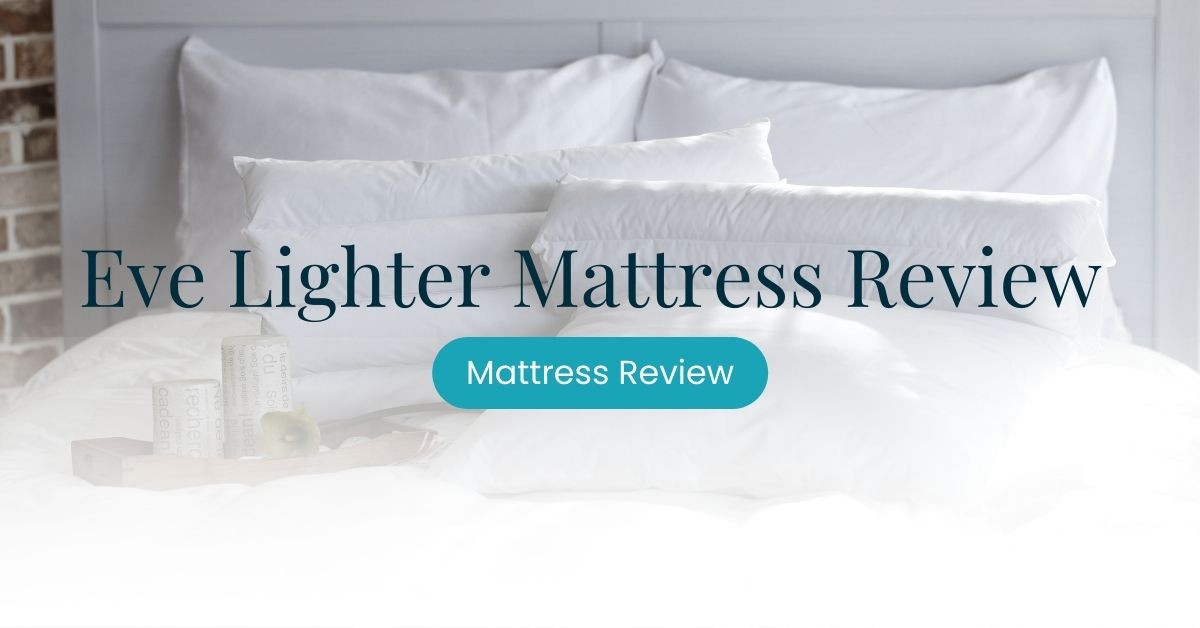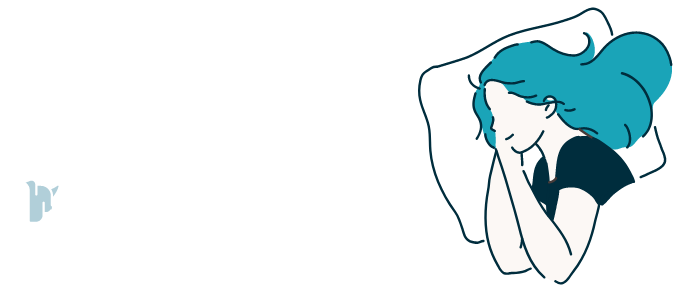Our expert guide on how to clean a mattress considers the types of stains and smells, the different types of mattresses and how to clean away any bed bugs or lice.
What You’ll Find In This Guide:
- Why You Should Clean Your Mattress
- Once you read these facts and numbers, you’ll be gathering the cleaning supplies!
- Step-By-Step Guide to Cleaning Your Mattress
- The general guide to successful, regular mattress cleaning to help sanitise and increase hygiene
- How To Clean Different Types of Mattress Stains and Smells
- Do you have a specific stain or smell you’re trying to clean away? All stains and smells covered!
- How to Clean different types of mattresses
- Different mattresses require different cleaning techniques, find out why, and learn how to clean your mattress type.
- Get rid of nasty critters.
- Bed bugs, lice, dust mites and more. Learn how the best way to clean your mattress
- How to maintain your clean mattress
- It’s not all about cleaning. We’ve gone through all the standard maintenance questions and tips.
You’re here because you’ve probably neglected cleaning your mattress – it can be a bit of a chore, although very necessary as you’re about to learn (you’ll be astonished by the amount of sweat that comes out whilst you sleep!).
It’s not as hard as you may have thought, and cleaning your mattress regularly keeps it sanitised and hygienic. Don’t forget that you spend at least a third of your life on your mattress!
It’s surprising that more people do not take their time to clean their mattresses; after all, it is one of the more expensive household items used the most! Mattresses can last up to 8-10 years, and you’ll soon find out how much sweat, dust, and bacteria that amounts to.
This guide is here to help you, maybe you have a red wine stain, or perhaps you’re looking for specific information on how to clean a memobloory foam mattress. We’ve covered everything for you.
The Scary Numbers To Make You Clean Your Mattress Today

- Did you know that the average adult loses 285ml of fluid every night?
- Did you know the average bed contains around 10,000 dust mites, which produce over two million droppings?
- Did you know you shed around 454g of dead skin per year on your bed?
- And you probably do know already that you spend over one-third of your life on your bed?
These stats hammer home the need to clean your mattress, especially if you expect your mattress to last at least 8-10 years.
In 8 Years Your Bed Will Collect
- 832,300ml (832.3 1L bottles) of fluid
- 3,632g (yes, 3.63kg) of dead skin
Maybe you’re thinking, “but, but I change my bed linens every week though! Surely that helps?”. Whilst you’re right in thinking that it does help to regularly and thoroughly clean your bed linens, the simple fact is that you need to clean your mattress.
All of these numbers come from The Sleep Council, and after further research, there are more facts and stats from the Environmental Health and Safety Office (EHSO). A used mattress can contain anywhere from 100,000 to 10,000,000 dust mites.
A single dust mite can produce up to 20 droppings daily, each of which contains proteins that cause allergies in humans – gross, right?
And if you don’t clean your mattress, you can be susceptible to the following risks:
- Staphylococcus
- Enterococcus
- Norovirus
- MRSA
So, how often should you clean your mattress?
There are several factors you have to consider when asking yourself how often you should clean your mattress:
- What type of mattress do you have?
- Is the mattress material breathable?
- Do you suffer from any sort of allergies?
- Do you have to flip or rotate your mattress?
There are many different types of mattresses, such as pillow-top, memory foam, hybrid and spring. These different types of mattresses have varying constructions and varying materials that can be considered more breathable.
The more breathable the material, the less likely your fluids (sweat) will build up as it’ll be given time to ‘breathe’ and not accumulate.
If you think your mattress is starting to build up various dirt and stains, and you are starting to suffer from allergy symptoms, then it’s time to clean it.
There is no ‘official’ answer given by a sleep or health authority, but I prefer to clean my mattress at least once every six months.
And if you have to flip or rotate your mattress to help maintain your mattress, then this is probably the opportune time for you to clean the mattress quickly.
Step-By-Step Guide On How to Clean A Mattress:
Warning: Never Soak Your Mattress with water
Step 1 – Gather your mattress cleaning supplies
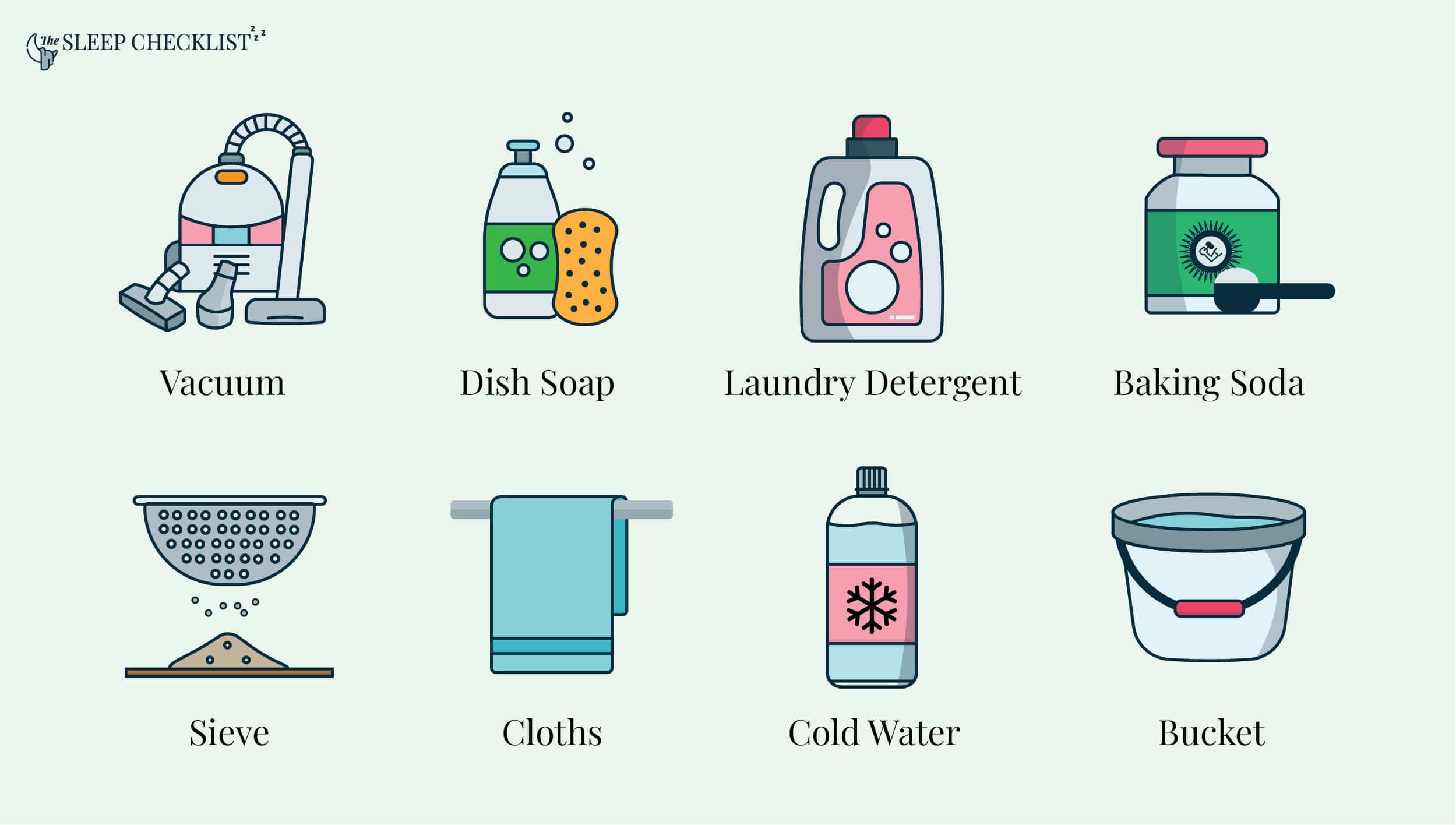
Get your materials ready. Here are the main items you’ll need:
– a vacuum with an upholstery attachment
– an enzyme cleaner or dish soap to get stains out
– laundry detergent
– baking soda
– sieve
– cloths for cleaning
– cold water
– bucket
Step 2 – Strip the bed and wash the bedding
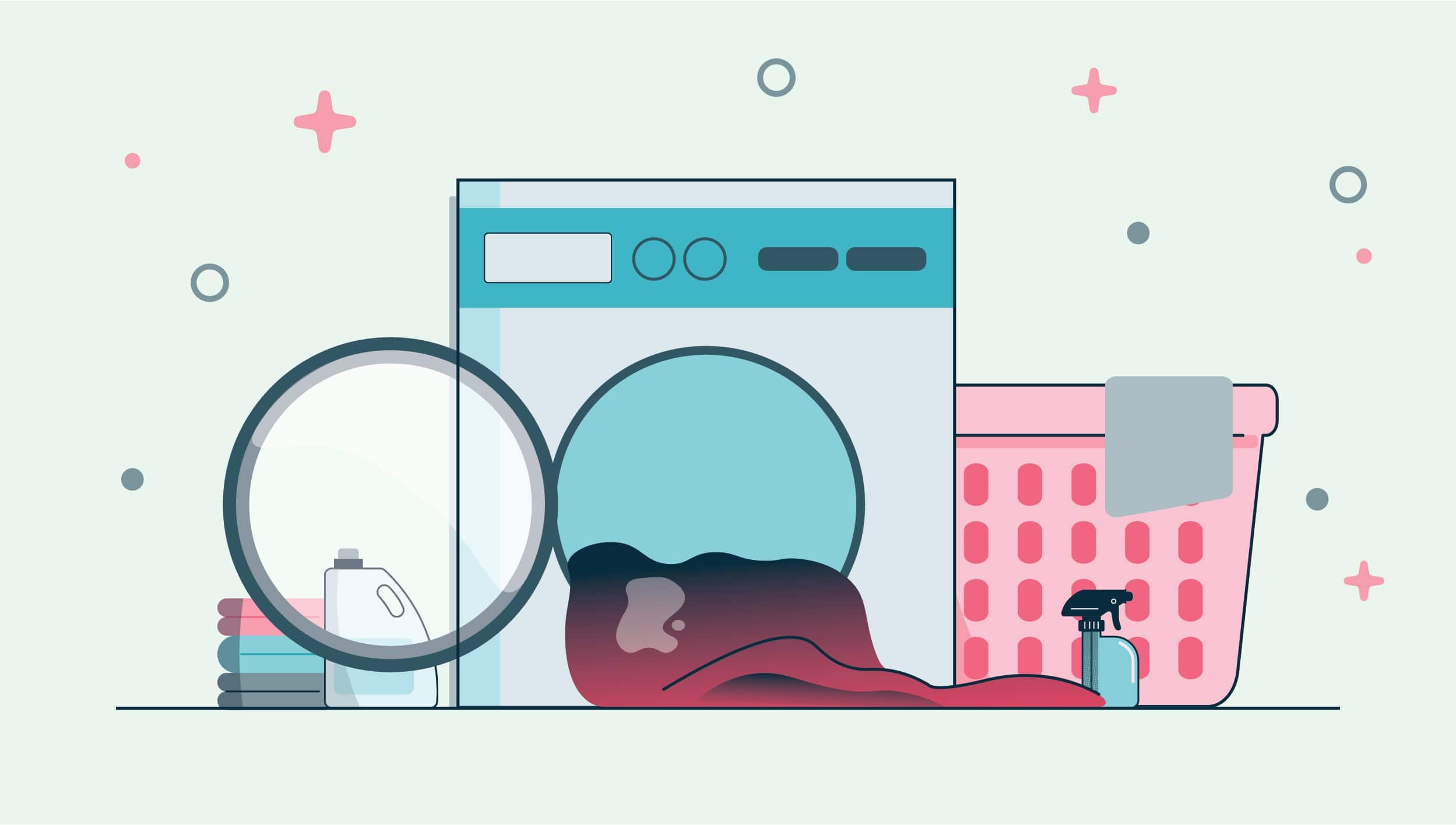
Remove beddings, pillowcases, and blankets from the mattress and put them in the washing machine for a spin.
Washing the beddings in hot water (at least 55 C°), which helps to eliminate dust mites. You may also want to wash your pillows, but remember to check if the care label allows it.
Step 3 – Vacuum the mattress
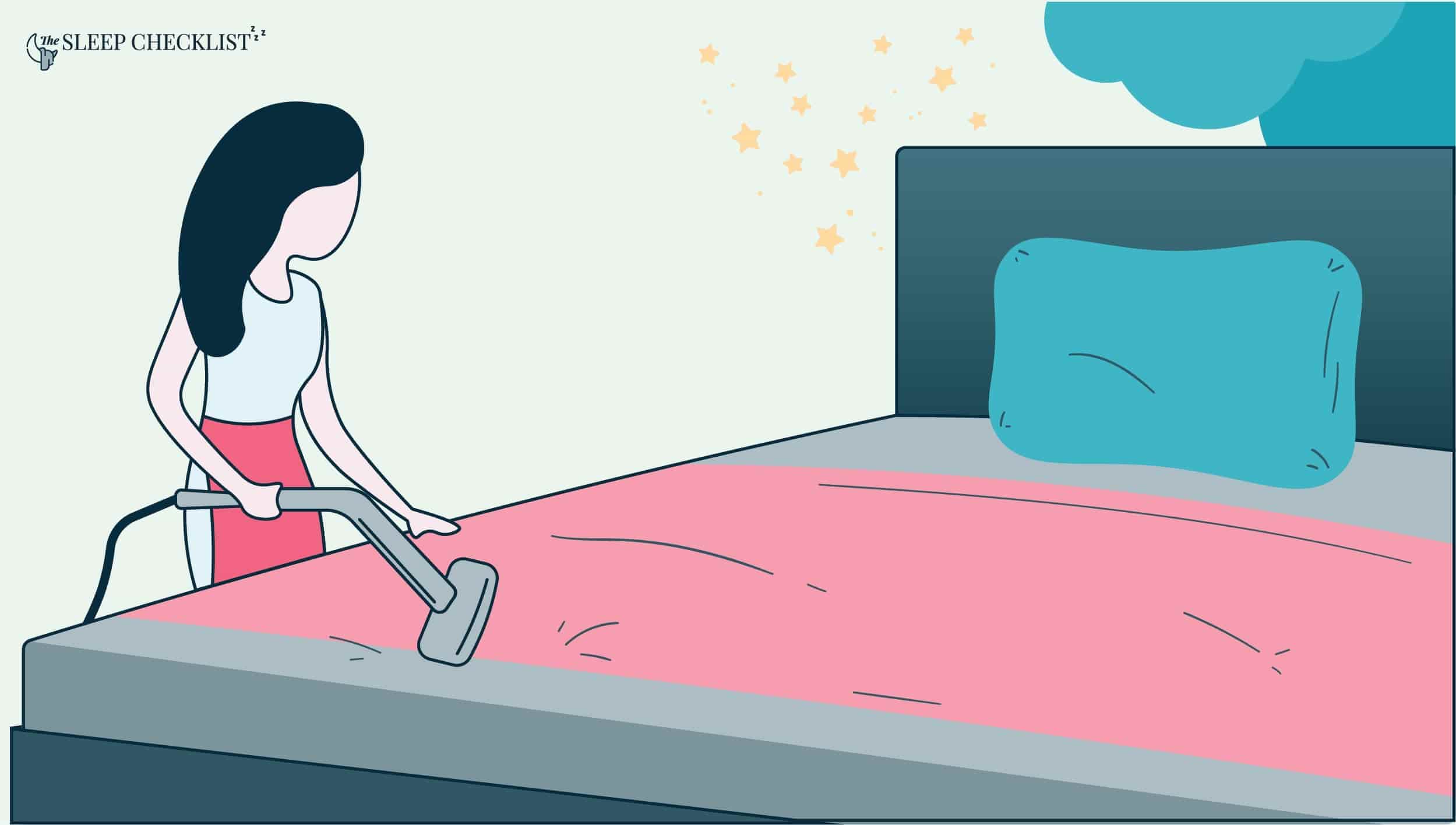
Grab your vacuum cleaner with the upholstery attachment. Start vacuuming your mattress, including the top, corners, sides, and seams.
Use the crevice attachment for the harder-to-reach areas. This step removes dust, dead skin cells, and dust mite droppings.
Step 4 – Time to spot clean any pesky stains
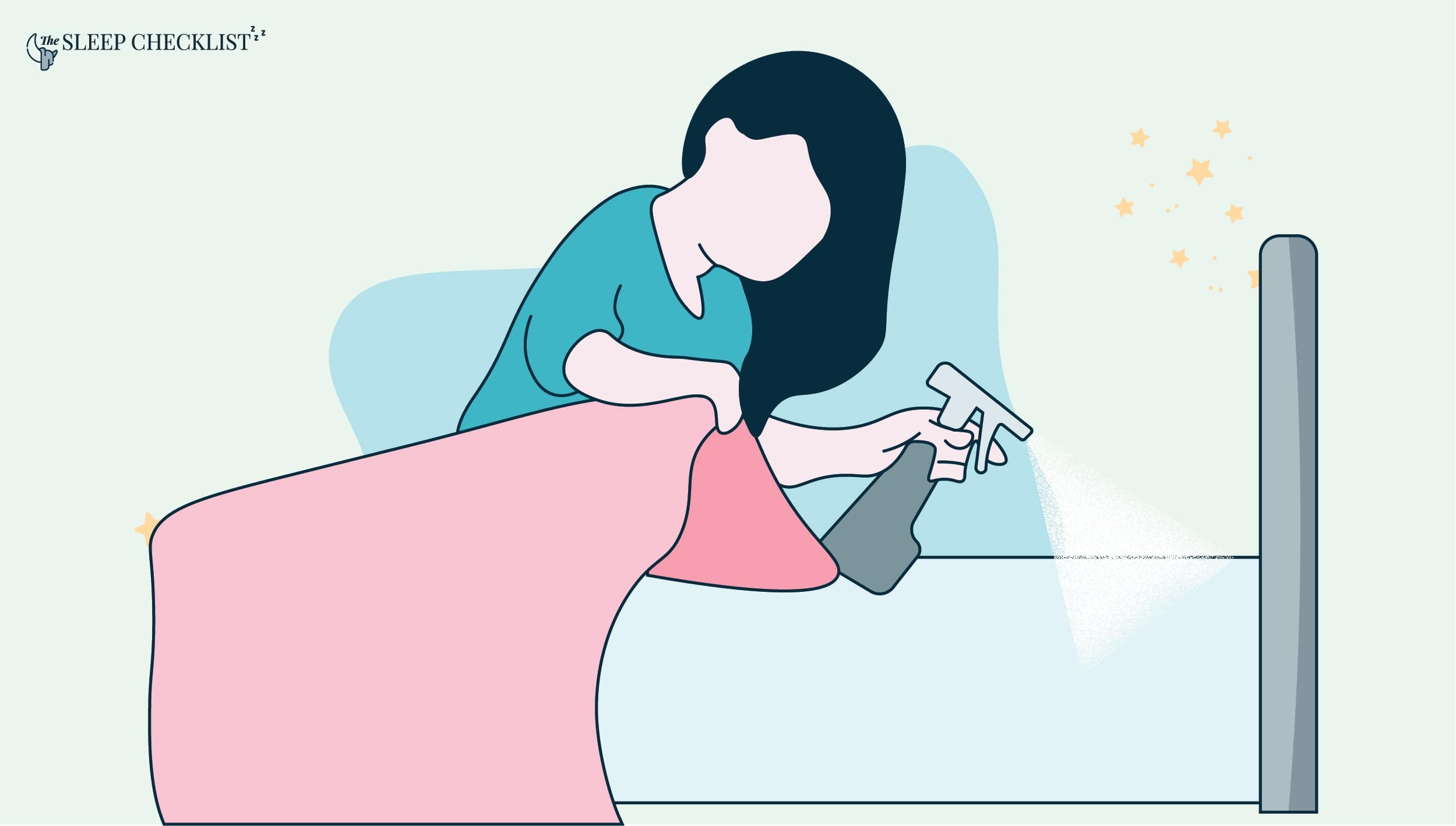
Have a specific stain? Check out our how to clean blood out of a mattress, vomit stains, and semen stains articles for stain-removal solutions specifics. But for general stains, mixing baking soda, salt, and cold water does the trick.
Dab your cleaning cloth onto the solution and use it to rub the stain. Let it sit for at least 10 minutes. Then, wipe it away with a damp cloth.
Step 5 – Baking Soda: Sprinkle and Brush
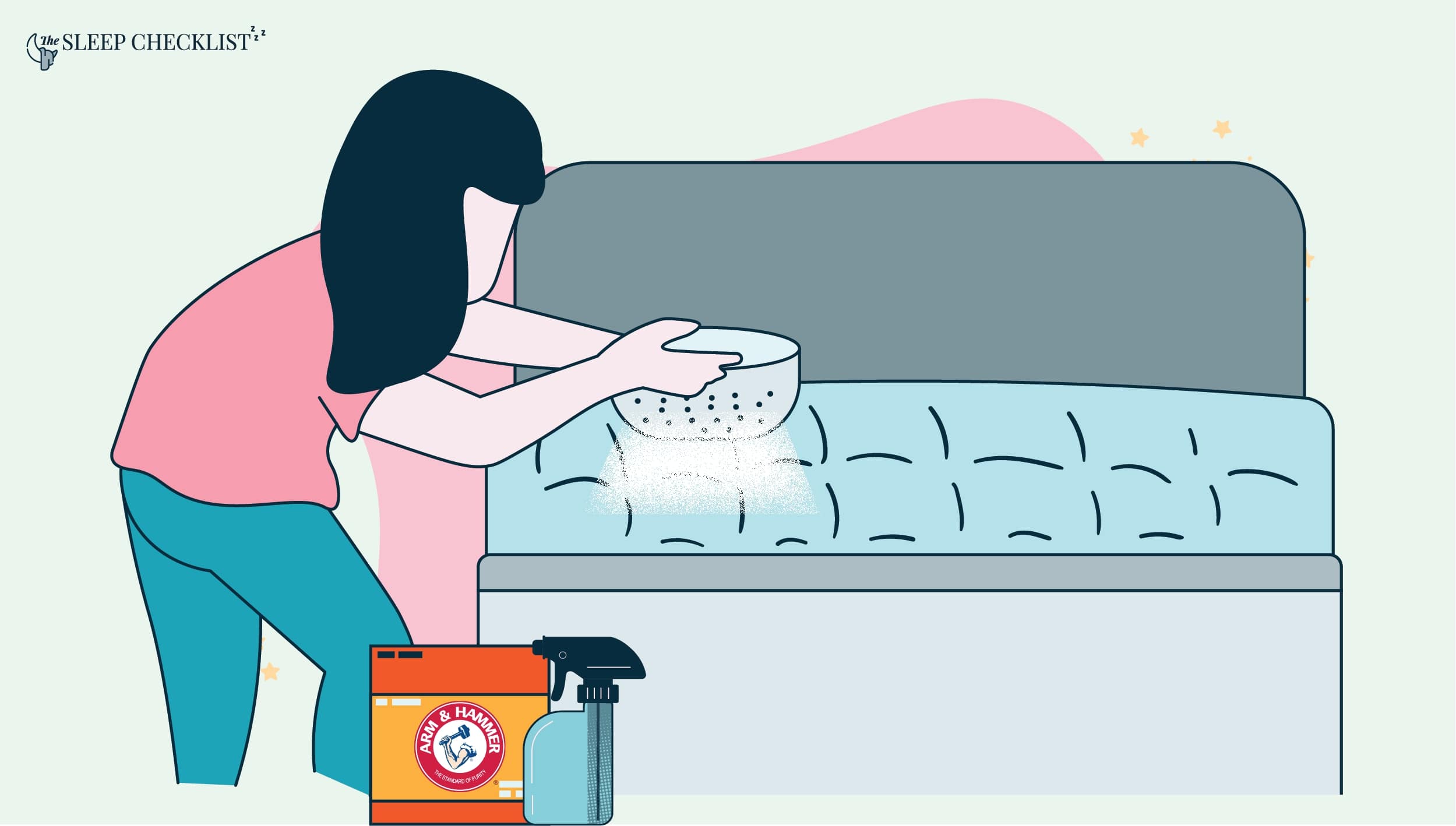
Using a sieve, evenly coat your mattress with baking soda. This helps to kill dust mites, deodorises smells, and removes dirt. Brushing the mattress helps scrub off debris. Leave it on for several hours.
Step 6 – Vacuuming Round 2
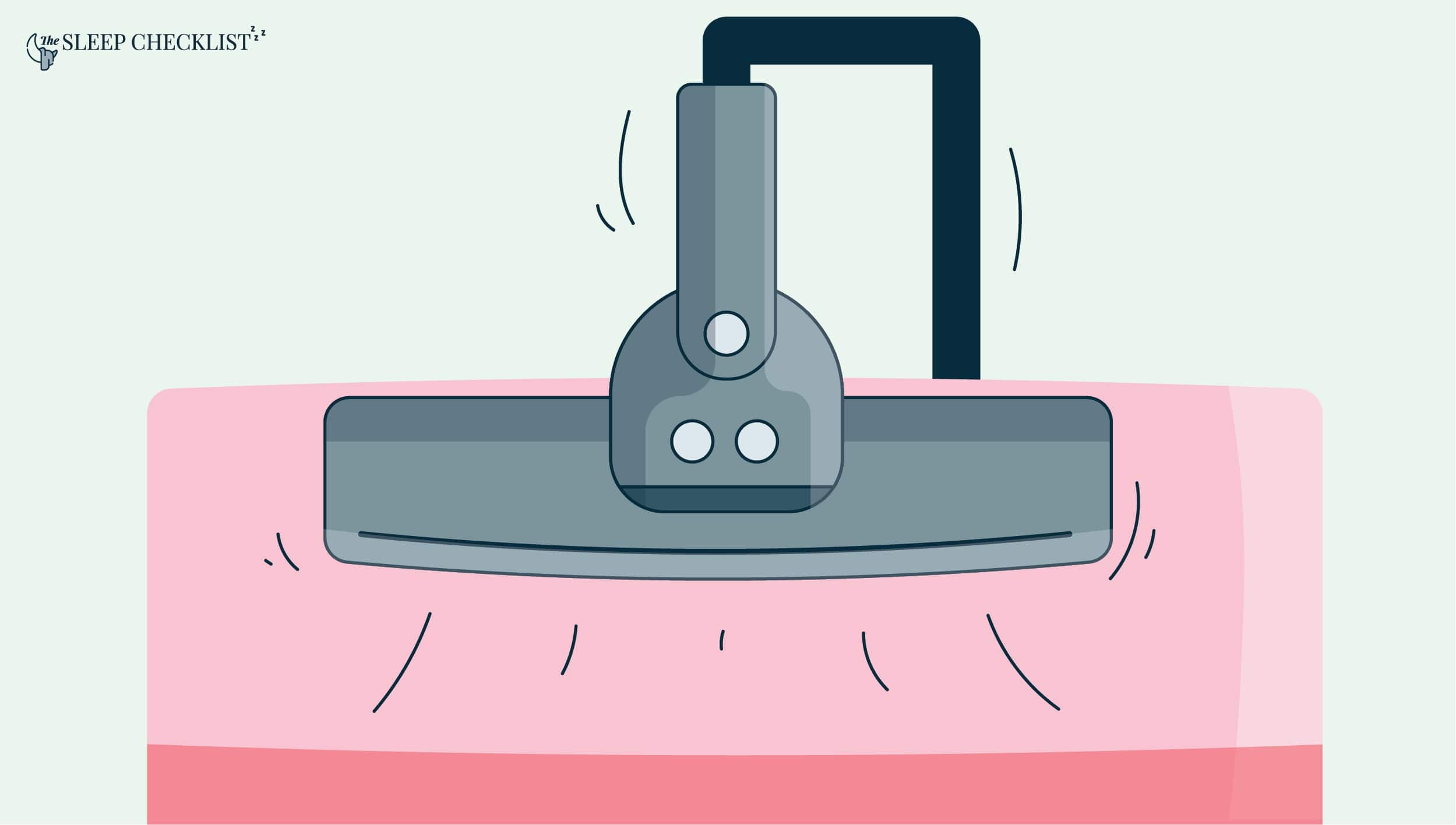
Grab your vacuum with your favourite upholstery attachment and go over your mattress once more. Just like you did in the 3rd step, this helps to remove the sprinkled baking soda, collecting dead dust mites and remaining mite droppings.
Step 7 – Air Your Mattress
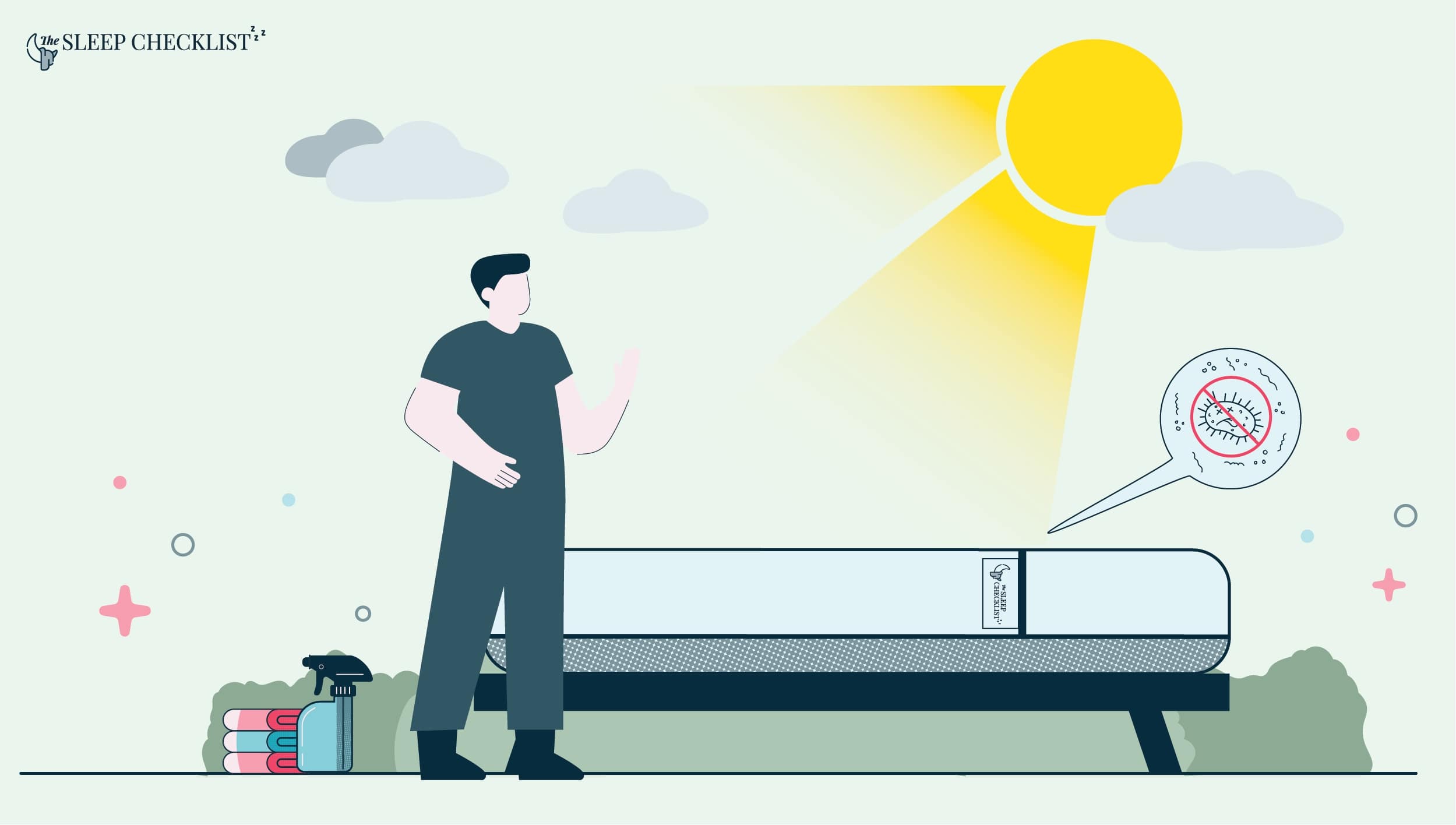
Placing your mattress under the sun for at least 3 hours and allowing it to air out eliminates bacteria and removes unpleasant smells.
One thing you need is human power to move the mattress, primarily if your bedroom isn’t located on the ground floor.
Optional: Rotate or Flip Your Mattress
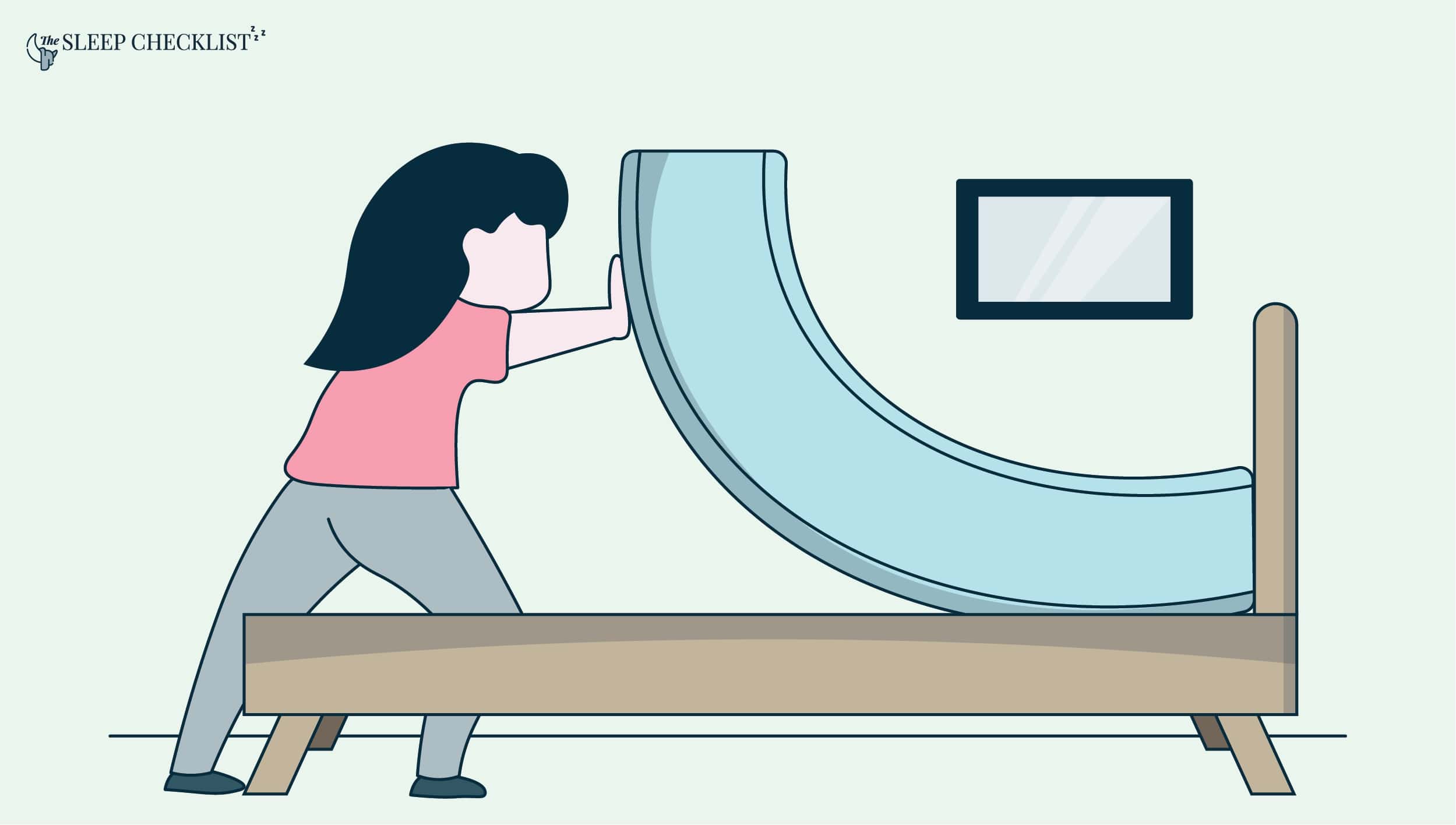
Please read the mattress manufacturer’s mattress care guide to see if you can flip or rotate the mattress. If you can, we would advise you to at this point.
What About Tougher Stains and Smells?
More often than not, we come across readers who are in specific instructions on how to clean specific smells or stains. I know I’m occasionally guilty of breaking my good habits and eating and drinking in bed – who doesn’t love a glass of red whilst watching a film.
While the guide above is perfect for cleaning your standard mattress, these pesky stains and smells sometimes require extra hard work.
From red wine stains to blood and soiled mattresses, you can find a specific mini-guide on cleaning the stain or smell away below.
- how to clean pee out of your mattress
- how to get yellow stains out of mattress
- how to remove sperm stains from mattress and sheets
- how to get mould out of mattress
How to Clean Different Types of Mattresses?
There are many different types of mattresses, but the main ones are Latex, Spring, Hybrid, Memory Foam, and Gel.
Earlier in the guide, you may have seen that one of the main factors to consider is the type of mattress you have for cleaning. Different mattresses have different material compositions, making some less breathable and more prone to a build-up in bodily fluids.
Our mini-guides will guide you through the specific cleaning instructions you need for each type of mattress.
- how to clean a memory foam mattress
- how to clean a latex mattress
- how to clean a pillow top mattress
- how to clean a futon mattress
- how to clean a foam mattress
How To Deal with Mattress Bed Bugs and Lice?
Bed bugs are a literal nightmare. They can grow large enough to be visible to the human eye, so perhaps you’ve already identified them on your mattress? We dig deep into how to deal with bed bugs, lice and more in our easy-to-digest guides.
Save yourself from waking up with bites all over your body.


